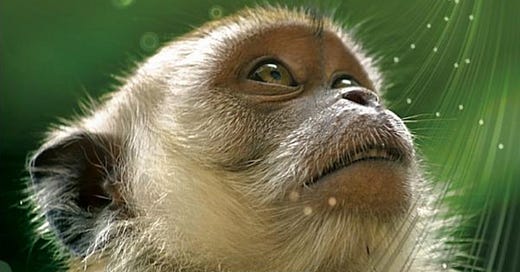
You hear a sound. Instinctively you know the direction that the sound is coming from.
The human body has two ears. The sound emanating from any source would arrive at the two at different times. This difference can be measured using Dopplers Effect. Using this infinitesimal difference the direction can be known. Your brain does not run these calculations, or perhaps it does without even your knowledge.
This same effect tells you whether the sound of a vehicle is coming towards you or going away from you.
Now, imagine being in a forest or a mountain. Have you been in a situation where you think a sound is coming from one direction and your friend says it is coming from another?
In the semiotic theories of Jakob von Uexküll and Thomas A. Sebeok, umwelt (plural: umwelten; from the German Umwelt meaning "environment" or "surroundings") is the "biological foundations that lie at the very epicenter of the study of both communication and signification in the human [and non-human] animal". The term is usually translated as "self-centered world". Uexküll theorised that organisms can have different umwelten, even though they share the same environment. The term umwelt, together with companion terms Umgebung (an Umwelt as seen by another observer) and Innenwelt (the mapping of the self to the world of objects), have special relevance for cognitive philosophers, roboticists and cyberneticians because they offer a potential solution to the conundrum of the infinite regress of the Cartesian Theater.
Source: Wikipedia
Umwelt is how we experience this world. Your experience of it is quite different from that of another. You have almost no way of knowing how they are experiencing it. What happens in their head when they hear a sound or a song. What is the colour that you are seeing as opposed to another.
In 2015, a mother and daughter in England had a disagreement over the colour of this dress and she posted it on Facebook to ask if it was Black and Blue or White and Golden. They were experiencing it differently.
Now, expanding this to the Umwelt of Animals.
Animals are able to sense a whole range of things that humans cannot. For instance, bees can see ultraviolet light and sunflower lights up under ultraviolet light.
Animals routinely communicate with one another in infra and ultrasound. This is done to ensure that animals that might hunt them are not able to hear their conversations.
Many can feel the vibrations in the ground. Cats sit close to the ground when hunting because their underbelly is very sensitive to vibrations and they can assess what their prey is doing even from a distance.
Dogs have an incredible sense of smell. Further, their sense of smell provides them with the ability to experience what happened in a place in the past. When they are dwelling on their walk to smell a place, they want to experience all the smells in that place and we keep tugging at them to keep moving.
Animals use these senses in a coherent manner. Mosquitoes can sense CO2 and are attracted to CO2. That is how they are able to find us. But for mosquitoes Heat + CO2 attracts them but (Heat - CO2) repels them, which could indicate danger. Not to mention their tolerance to temperatures lies in a narrow band between 20 degrees C and 35 degrees C.
We are completely oblivious to the universe of interactions and communication going on around the world. The trouble is till an instrument is able to measure and prove its existence science will outright deny it. If I cannot see it, it does not exist.
We are incapable of appreciating the umwelt that another human being possesses let alone those of animals. Consequently, we destroy entire ecosystems without understanding the deep and intricate relationships between various aspects of the ecosystem.











